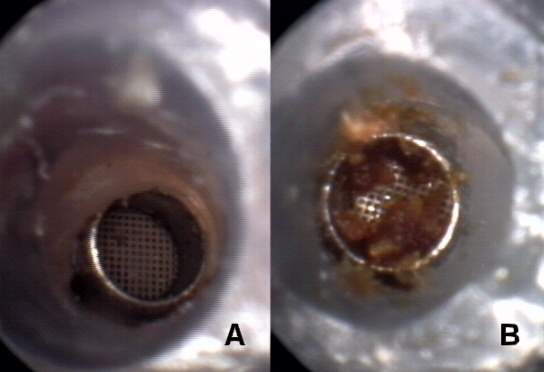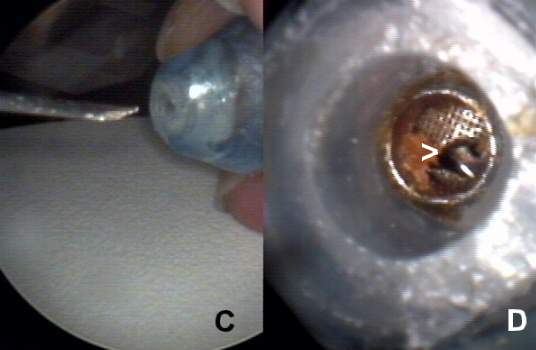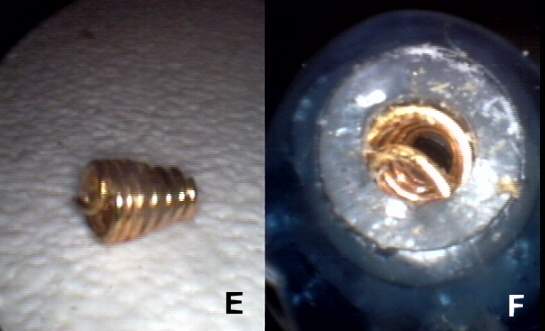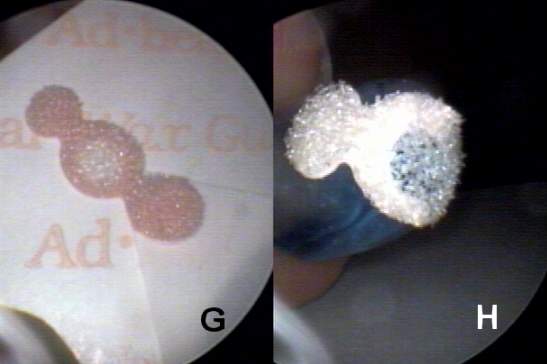
CIC hearing aids are especially prone to reduced or absent output due to cerumen impaction in the receiver. Second canal bend insertion of the CIC tip requires a "scraping" contact with the cerumen-producing walls of the lateral, cartilaginous canal. In addition, the receiver tube is often short or virtually non-existent, providing little or no distance barrier to the receiver nub. The problem is compounded by the use of an intrinsic receiver damping mesh (Figure A) which can become easily occluded with a ceruminous film (Figure B). This condition can be demonstrated to the patient with VO, urging more scrupulous instrument hygiene.

Because the cerumen fills the interstices of the metal mesh, service alternatives are limited to returning the instrument to the laboratory for receiver replacement or more aggressive field action. After removing particulate cerumen from the receiver nub, a #27 graded edge hypodermic syringe (Figure C) can be used with gentle pressure to centrally perforate the the damping mesh (Figure D). This generally restores the instrument response with negligible negative acoustical consequences.

If sufficient length exists within the silicone receiver tube, a wax basket (Figure E), which will require periodic replacement, may be placed within the receiver tube (Figure F). Use of the wax [mascara] brush for nightly cleaning should be reviewed with the patient using VO magnification.

If the silicone receiver tube is too short, the use a disposable external wax filters (Figure G) may be helpful. Per unit cost of these items is similar to that of hearing aid batteries. VO can be used to instruct the patient in the appropriate mode of wax filter affixation (Figure H)
